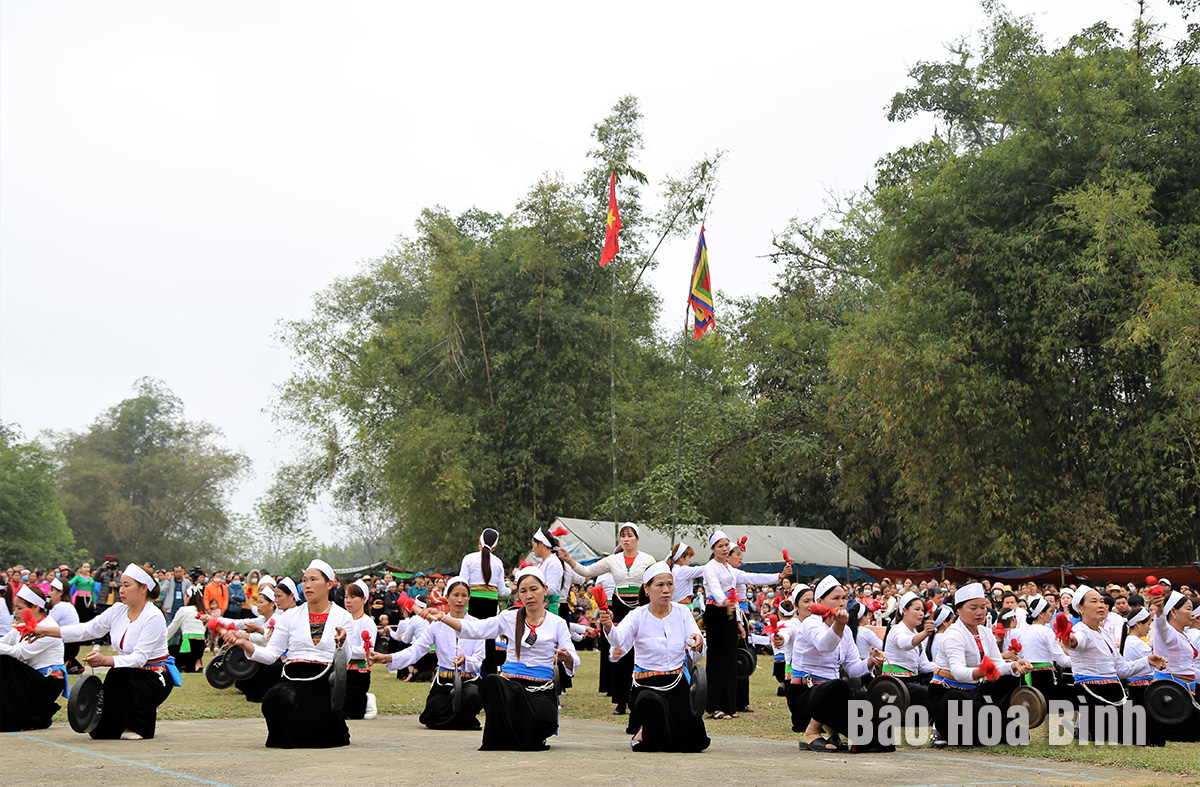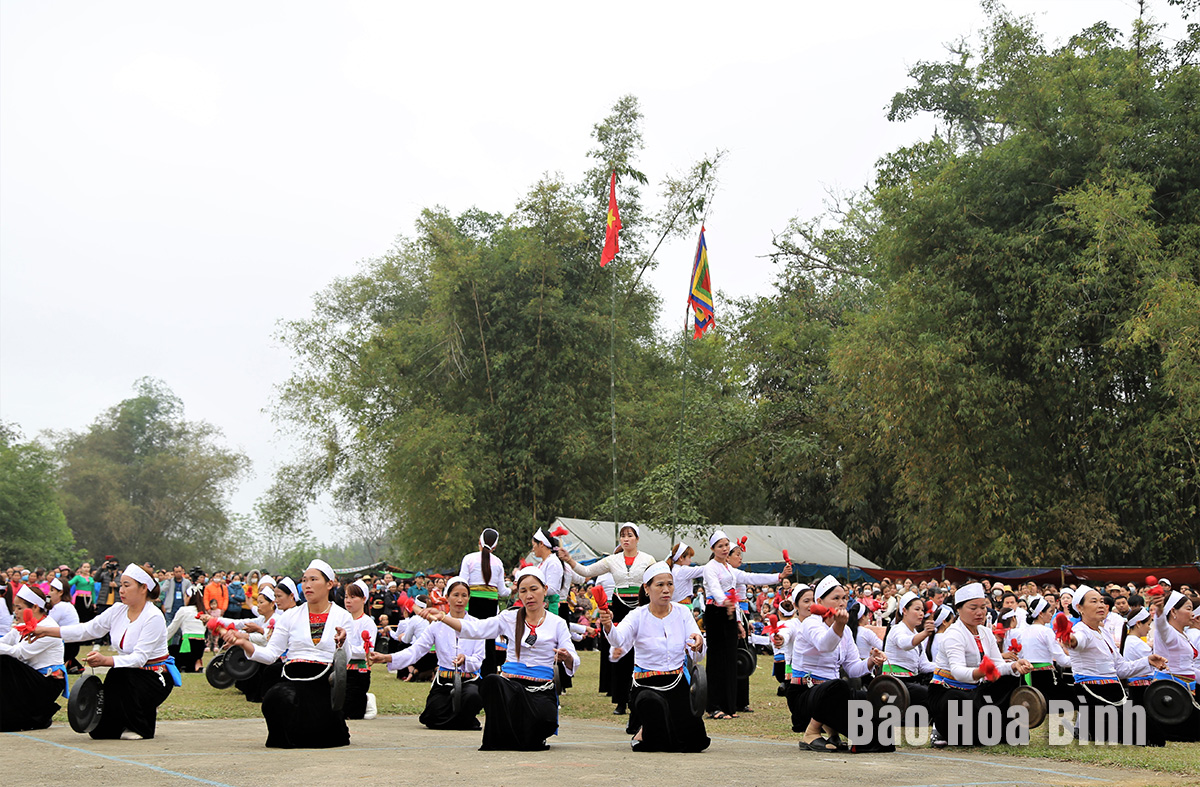
The Standing Board of the provincial Party Committee has issued Conclusion 1062 on the review of the three-year implementation of Resolution 04, issued on October 11, 2021 by the Standing Board, on the preservation and promotion of cultural heritage values of ethnic groups in Hoa Binh province in the 2021 - 2025 period, with orientation towards 2030.
Ethnic groups’ cultural heritage values to be preserved, promoted more effectively.
Accordingly,
to continue effectively performing the tasks and targets set in Resolution 04,
the Standing Board demanded promoting Party committees and administrations’
leadership over the preservation and promotion of cultural heritage values.
They need to direct reviewing the implementation of the targets under
Resolution 04 to ensure effective preservation and promotion of local ethnic
groups’ cultural heritage values in the coming period as in accordance with the
Hoa Binh provincial Master Plan for 2021 - 2030, with a vision to 2050.
All-level authorities and sectors need to press on with efforts to realise
specific targets to uphold and bring into play ethnic groups’ cultural heritage
values while at the same time developing a model for heritage preservation and
promotion clubs at the grassroots level.
It is also important to properly plan and manage relic sites, assign management
and protection tasks to the communal-level localities that are home to
heritage, enhance state management activities, and boost communications to
introduce and popularise the Muong ethnic culture and the Hoa Binh
Civilisation.
In addition, the Standing Board asked for continuing to reform activities of
the Vietnam Fatherland Front as well as socio-political organistions, and
improving their role in the preservation and promotion of ethnic groups’
cultural heritage values.
With an increasingly vibrant and widespread emulation movement aimed at building cultured residential areas and cultured families, Yen Thuy District has been making steady progress toward improving both the material and spiritual well-being of its people, while fostering a civilized, prosperous, beautiful, and progressive community.
Once lacking recreational spaces and community facilities, Residential Group 2 in Quynh Lam Ward (Hoa Binh City) has recently received attention for the construction of a new, spacious, and fully equipped cultural house. The project followed the model of state support combined with public contributions in both labor and funding.
The "All people unite to build cultural life" movement, which has been effectively integrated with Kim Boi district’s socio-economic development goals, is fostering a lively spirit of emulation across local residential areas, hamlets, villages, public agencies, and enterprises. In addition, through the initiative, traditional cultural values are being preserved and promoted, while community solidarity and mutual support in poverty reduction and economic development are being strengthened.
A working delegation of the Hoa Binh provincial People’s Committee led by its Permanent Vice Chairman Nguyen Van Toan on June 11 inspected the progress of a project to build the Mo Muong Cultural Heritage Conservation Space linked to tourism services in Hop Phong commune, Cao Phong district.
Born and growing in the heroic land of Muong Dong, Dinh Thi Kieu Dung, a resident in Bo town of Kim Boi district, in her childhood was nurtured by the sweet lullabies of her grandmother and mother. These melodies deeply imprinted on her soul, becoming an inseparable part of her love for her ethnic group's culture. For over 20 years, this love for her hometown has driven Dung to research, collect, and pass down the cultural values of the Muong people to future generations.
In the final days of May, the Ethnic Art Troupe of Hoa Binh Province organized performances to serve the people in remote, mountainous, and particularly disadvantaged areas within the province. These were not just ordinary artistic shows, but they were the meaningful journeys aimed at spreading cultural values, enhancing the spiritual life of the people and contributing to the preservation of ethnic minority cultural identities.



